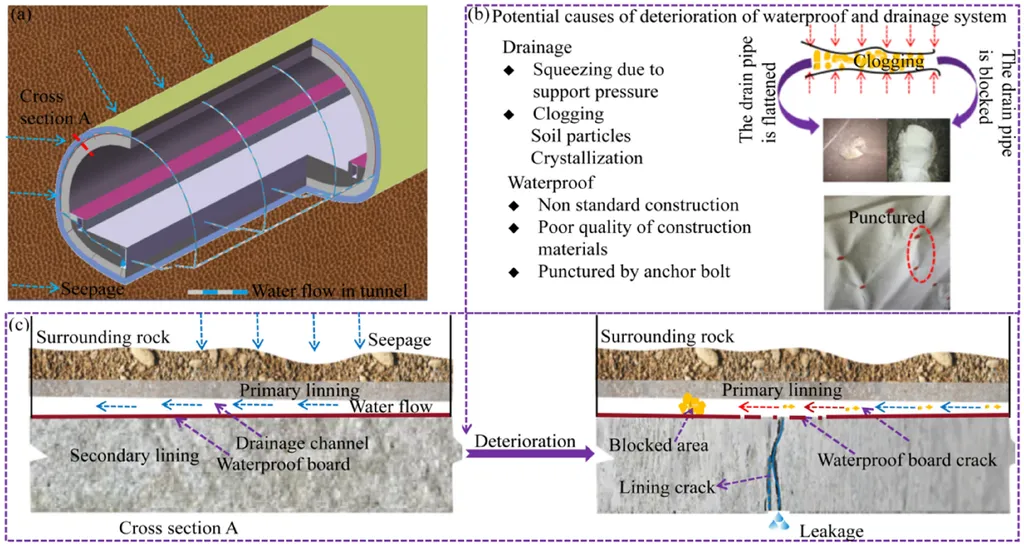In the heart of China, researchers at Central South University are tackling a stubborn problem that has long plagued the tunneling industry: pipe blockages in slurry shield machines. Led by Zixiong Zhou from the College of Mechanical and Electrical Engineering and the State Key Laboratory of Precision Manufacturing for Extreme Service Performance, a team has conducted a groundbreaking study to understand and mitigate this issue, with significant implications for the energy sector.
Slurry shield machines are essential for tunneling projects, particularly in urban areas where minimal surface disruption is crucial. These machines use a slurry circulation system to support the tunnel face and transport excavated material. However, pipe blockages due to particle accumulation can halt progress, leading to costly delays and maintenance. Zhou and his team aimed to uncover the dynamics behind these blockages to improve efficiency and reliability.
The researchers set up a large-scale indoor experiment to mimic real-world conditions. They used three types of particles—ballasts, pebbles, and spheres—to represent the gravel accumulation typically found in tunneling projects. High-speed cameras captured the particle pickup motion, allowing the team to slow down and analyze the process. “We found that the pickup motion can be divided into two forms: particles transferring and integral movement,” Zhou explained. “This distinction is crucial for understanding how particles behave under different conditions.”
The study revealed that larger particles require higher critical velocities to be picked up, but this increase in velocity comes with a trade-off. As the speed increases, the rate of pickup decreases. Moreover, the shape of the particles plays a significant role. Ballasts, with their irregular shapes, have the highest critical velocity, followed by pebbles and then spheres. “The effect of particle categories on critical velocity is significant and corresponds to their shape irregularity,” Zhou noted.
Perhaps the most surprising finding was the impact of particle piling. The way particles are piled can significantly affect the critical velocity, sometimes even more than the particle size itself. This insight could lead to better strategies for managing particle accumulation and preventing blockages.
The implications for the energy sector are substantial. Tunneling projects are often part of larger infrastructure developments, including pipelines and underground energy storage facilities. Improving the efficiency of slurry shield machines can reduce downtime and maintenance costs, making these projects more feasible and economically viable. “Understanding these dynamics can help engineers design more effective slurry circulation systems, ultimately benefiting the energy sector and other industries that rely on tunneling,” Zhou said.
Published in the Ain Shams Engineering Journal, which translates to the Journal of Ain Shams Engineering, this research offers a fresh perspective on an old problem. As the energy sector continues to expand and diversify, innovations like these will be crucial for overcoming technical challenges and ensuring the success of large-scale projects. The study not only sheds light on the behavior of particles in slurry systems but also paves the way for future advancements in tunneling technology.

